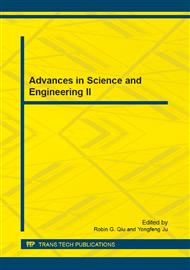p.237
p.244
p.253
p.256
p.261
p.268
p.274
p.279
p.284
Analysis of Control Strategy for Extended-Range Electric Vehicle
Abstract:
This paper introduced the structure of Extended-Range Electric Vehicles as well as its characteristics. Principle researches have been offered on the parameters matching of the power-train and main components. Operating modes and control strategies were discussed, especially the two control strategies of charge sustaining mode which is shown as load following strategy and engine optimal strategy, and the effects of both control strategies are simulated and analyzed. The results indicate that the load following strategy can obviously extend battery’s lifespan, but the engine optimal strategy can reduce fuel consumption and emission effectively.
Info:
Periodical:
Pages:
261-267
Citation:
Online since:
October 2011
Authors:
Keywords:
Price:
Сopyright:
© 2012 Trans Tech Publications Ltd. All Rights Reserved
Share:
Citation:


